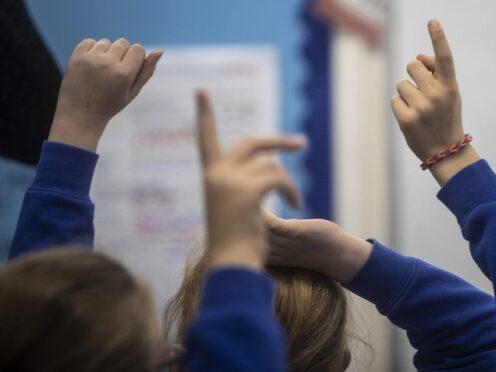
The next government will inherit a series of challenges facing schools – including “persistent” education inequalities, higher pupil absences and growing mental health difficulties, a report has warned.
Challenges due to the Covid-19 pandemic and the cost-of-living crisis have “cast a long shadow” that will affect schools and young people beyond this parliament, the Institute for Fiscal Studies (IFS) has said.
Schools in England are seeing more pupils with special educational needs and disabilities (Send), a rise in absenteeism, and growing emotional and behavioural difficulties among young people, the report said.
The research, funded by the Nuffield Foundation, noted that literacy and numeracy skills of 15-year-olds in England have “improved significantly” relative to other high-income countries over the past decade.
Within the UK, English schools perform much better than those in Wales and Scotland, the IFS said.
But it warned of “substantial inequalities” in attainment at every stage of education in England.
“Despite decades of policy attention, inequalities in education have been exceptionally persistent,” the report from the think tank said.
At GCSE, just 43% of 16-year-olds eligible for free school meals achieved a grade 4 or higher in maths and English in 2023, compared with 72% of their better-off peers.
Alongside the “long-standing” issue of educational inequalities, schools are facing new challenges in the wake of the Covid-19 pandemic, the report said.
The number of children on an education, health and care (EHC) plan, which sets out the additional Send support a child or young person needs, has risen by 60% since 2016.
The rise in EHC plans has been greater among less disadvantaged families over the last few years, the report said.
“This increase is even more striking since there is evidence of schools and local authorities rationing support; 98% of appeals are successful at tribunals,” according to the IFS paper.
Another challenge for schools has been a spike in absences compared to before the pandemic, with students now missing 14 days of school per year on average.
The report said nearly two in five (37%) pupils from disadvantaged backgrounds are now “persistently absent”, meaning they miss at least one day of school per fortnight on average.
An increase in absenteeism, rise in behavioural problems and mental health challenges, and a growing number of children with Send is “creating significant pressures in the education system”, the IFS said.
The report concluded: “The next government will inherit an education system that produces high levels of student achievement. The performance of 15-year-olds in reading and mathematics is well above the OECD average.
“But there are also fundamental challenges. At every stage of education, children from less advantaged backgrounds perform significantly worse.”
It added: “As recent decades have shown, there are no simple solutions.
“But developing an education system that supports all children to reach their full potential is an enormous prize, and one that the next government should strive to achieve.”
Imran Tahir, IFS research economist and an author of the report, said: “England is now one of the top performers in international assessments of reading and maths, and few countries deliver both stronger results and lower inequality.
“But the scale of those inequalities is still enormous – the gap between the most and least-disadvantaged fifth of 15-year-olds is equivalent to the gap between the average in England and the average in Colombia.
“If the next government wants to tackle these entrenched inequalities, its challenge will be made even more difficult by the legacy of the pandemic.
“Almost four in 10 disadvantaged pupils now miss at least one day of school per fortnight. Rates of special educational needs and mental health challenges are rising sharply. And twice as many young people now say they strongly dislike school as before the pandemic.
“The key for the next government will be to build on the progress made in pupil attainment, but to address these new challenges that are putting schools and teachers under severe strain.”
Josh Hillman, director of education at the Nuffield Foundation, said: “Inequalities in educational achievement and opportunity remain large, and the Covid-19 pandemic has only widened them further.
“Incoming education ministers that seek to address this will need to develop innovative and well-resourced policies around areas such as literacy and numeracy, special educational needs and pupil absence.
“But other government departments will also need to play a part to support the broader wellbeing of disadvantaged children and young people, essential for their educational development.”

Enjoy the convenience of having The Sunday Post delivered as a digital ePaper straight to your smartphone, tablet or computer.
Subscribe for only £5.49 a month and enjoy all the benefits of the printed paper as a digital replica.
Subscribe